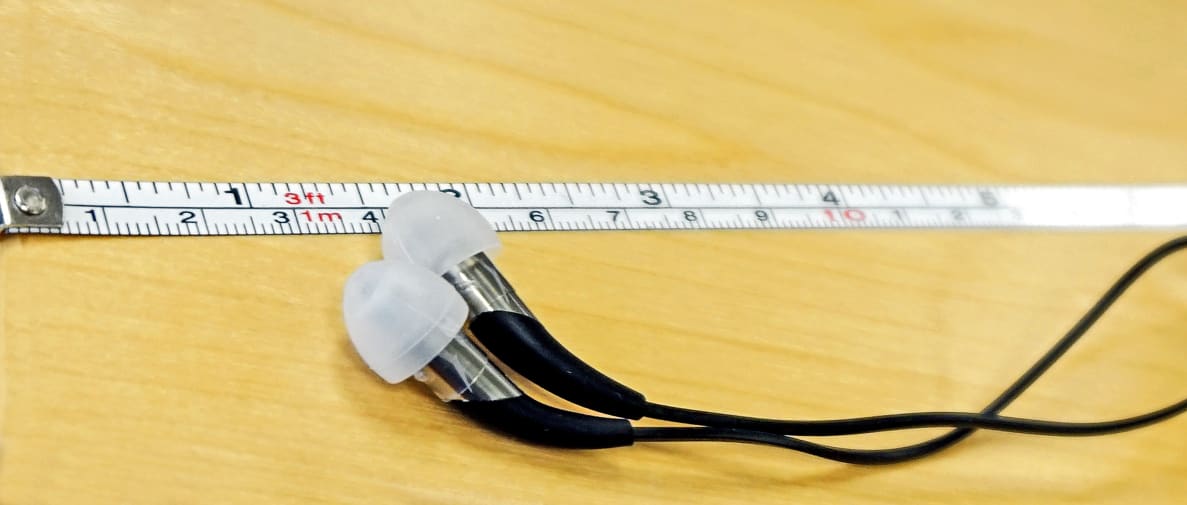Pros
Cons
Meet the Klipsch X11i (MSRP $349), a set of absolutely tiny headphones that nevertheless boast big, full-bodied sound. An elegant, straightforward design bears out some of the slimmest, most lightweight in-ear speakers we've ever seen. They're extremely expensive, but you're paying for good materials, sleek presentation, and an audiophile experience that fits in a matchbox.
Other than a few spots of under-emphasis in the upper midrange/treble, the Klipsch X11i are great performers—but they aren't audiophile-grade. Points of emphasis in the upper bass range, and under-emphasis in the upper midrange, present a good, consumer-friendly sound that nevertheless means you won't get the flat, even response that's desirable for mixing.
The X11i's boast great accessories and a solid design, but if you're just looking for the best sound quality possible, you could save a bunch of money by going with a less posh pair of in-ears like the JBL Synchros S200i, which are about $99 online.
Design & Functionality
Pretty durable for some of the smallest, lightest headphones ever.
When it comes to in-ear headphones, portability and discreet fashion often cross paths. Whether you're listening to stock earbuds or premium in-ears, the ability to stow them in a pocket or purse is one of the biggest advantages compared to other headphone types. In that same vein, the design of pricier in-ears tend to either subtly focus on fashion or stay out of the way—they don't dominate your head like bulkier over-ear types.
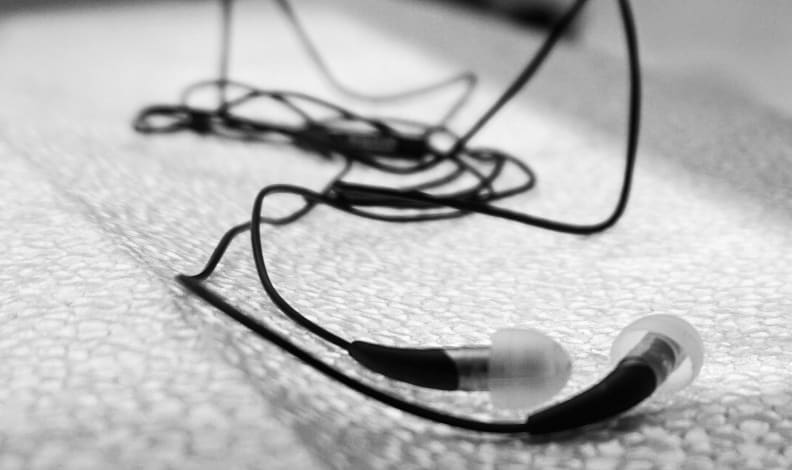
The Klipsch X11i in-ears are some of the lightest, smallest ear buds available. They feature high-quality materials and a tangle-resistant cable.
That's the story of the Klipsch X11i in-ears. A tangle-resistant black cable with a three-button in-line mic/remote yields two extremely small, lightweight buds. Materials are durable as can be without introducing excess filigree or extraneous weight. The X11i's boast an elegant focus on minimalism and high-quality materials.
The included accessories reflect the same ethos. Alongside the in-ears themselves, you get a compact, leather carrying case with a magnetic flap, an airplane adapter, a 3.5mm adapter, five silicon sleeves, and an optional shirt clip. The accessories are simple and made to last—and, thankfully, the alternate sleeves are varied enough that most listeners should be able to find a perfect fit.
{{ photo_gallery "design" }}
The X11i's in-line controller is designed to work specifically with Apple devices like an iPod, iPhone, or iPad. I tried them out with a Windows phone and an Android tablet, too. Some functionality, like play/pause, worked occasionally on the Android tablet, but the X11i's mic/remote combo wouldn't function at all with the Windows phone.
Unfortunately, Klipsch doesn't provide an alternate model to the X11i, so if you want to seamlessly play/pause music, control a playlist, or take/hang up calls with these headphones, you'll need an Apple device.
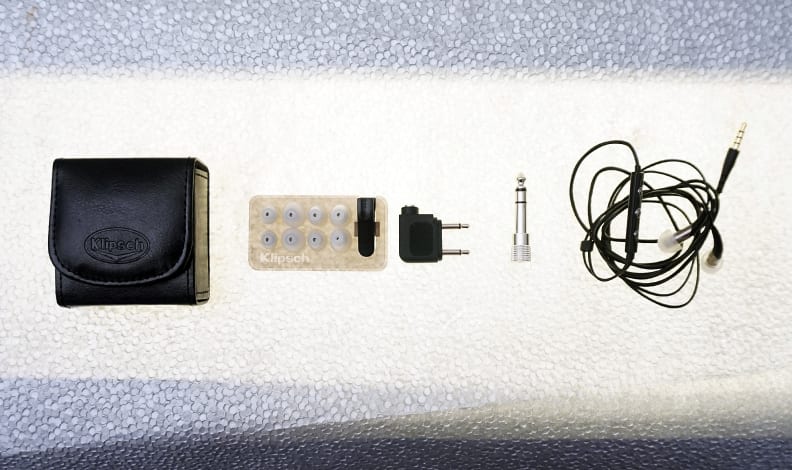
The X11i's included accessories are just as high-quality and finely polished as the ear buds and cable.
Audio Quality
These in-ears aren't without flaw, but most listeners will be quite impressed.
At a listing of $349 per pair, the X11i in-ears are well within the high-end price range. Some of what you're paying for is the super-compact design and durable materials, but naturally buyers should expect very solid performance, too. Testing has revealed that the X11i aren't perfect, but they're still very good for the money.
First and foremost, the sound itself. If you're a fan of cranked-up booming bass, these aren't the 'buds for you. The X11i's take a gradual approach to bass, starting out with very minimal sub-bass frequencies (the lowest of low notes) and slowly adding emphasis until they peak in the midrange.
Many consumer headphones take a semi-aggressive approach to bass emphasis, boosting the low-end so that instruments like timpani, electric/acoustic bass, or baritone vocals leap to the forefront of music. The X11i instead emphasize the midrange more heavily, so instruments like guitars, trumpet, and french horn tend to stand out in the mix.

The tiny Klipsch X11i in-ears boast surprisingly big sound. Unfortunately, they lack the full, flat sound that most audiophiles are searching for.
While this gradual increase/decrease in emphasis leading up to and away from upper bass/lower midrange tones gives plenty of emphasis to most of the instruments you listen to, the X11i provide less of a presence for upper midrange and treble sounds. By comparison, meatier bass/midrange instruments tend to overpower subtler elements like overtones and cymbals. While it doesn't make for a bad sound, it does mean you won't technically get the even emphasis prized by many audiophiles.
Otherwise, the X11i in-ears are solid performers. These lightweight buds are primarily distortion free—there's a bit here and there in the sub-bass range, but nothing that's audible—and, thanks to their ear canal plugging design, they block lots of outside ambient noise while keeping your music private. Other than small areas of under-emphasis in the upper midrange/treble, these tiny Klipsch buds sound great.
For more information on our test results and hard data, head over to the Science Page.
The Verdict
Solid performance bolstered by an elegant, durable design.
At $350, the Klispch X11i in-ears are by no means cheap. You're paying top dollar, but you're also getting a lot of quality for that investment.
These in-ears are simple and minimalist, but for some of the smallest and lightest 'buds we've ever tested, they're surprisingly durable; everything from the accessories to the in-line remote are steeped in craftsmanship.
The sound quality could be a bit better, but most consumers will be completely pleased by this cross-roads of design and delivery.
A gentle boost to bass/midrange frequencies gives a good, full sound, though a few underemphasized upper midrange and treble elements may bother golden-eared listeners—especially if they're already versed in high-end sound.
The only sticking point here is the price: For hundreds less, you could secure in-ear headphones like the JBL S200i, which boast similarly good sound and performance for $99. The Klipsch X11i in-ear headphones boast a solid combination of good design, great extras, and reliable sound—but they aren't perfect. Time in the lab revealed small issues with low-end sub-bass distortion and under-emphasis in treble/upper midrange frequencies. However, besides these couple of flaws, the X11i boast reliable specs, with good bass/midrange emphasis, good isolation, and even channel tracking.
Frequency Response
Our frequency response test measures how a set of headphones emphasizes each frequency across the audible spectrum. We feed a set of headphones a 78 dB sweep, and then analyze at what volume each frequency plays back. By comparing the relative decibels to the 78 dB starting point, we get a perfect snapshot of how a set of headphones handles music.
The X11i have a rather interesting frequency response. They provide very little sub-bass, starting low around 60 dB (-18) and building gradually to a peak at 250 Hz, between the bass range and the beginning of the midrange, which sounds around 82 dB, meaning meatier, midrange and upper bass instruments get ample emphasis compared to surroundings tones.
Unfortunately, the X11i underplay frequencies between 2kHz and 6kHz, which is a good portion of the upper mid and treble ranges. This means many important, but subtler musical elements—such as overtones from low-sounding instruments—will be difficult to hear.
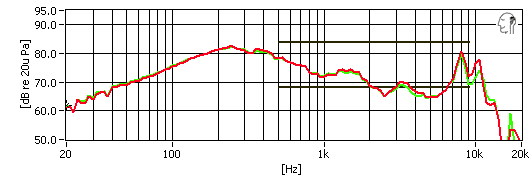
Channel Tracking
Our tracking test sends a frequency sweep through a set of headphones and measures how loud the sounds play out of each channel, or ear cup. If the right/left channel is notably louder in one ear than the other, it can be distracting, especially during non-musical content like podcasts.
The X11i's performed well here, with no large shifts in channel volume through most of the audible frequency spectrum. Things start to favor the right channel right around 9.5kHz, but most people will never hear or notice this, as it's extremely high in the frequency range.

Isolation
Our isolation test measures how well a set of headphones naturally (passively) or actively cancels or blocks ambient noise. It can be a pain to continually have to raise the volume on music or other audible content in order to hear it over the din of noise around you, especially if you're commuting or traveling in public areas. The X11i performed well here, again, as most in-ears do. Because they plug directly into your ear canals, in-ear style headphones tend to be great isolators.
The X11i block about 20 dB of sound in the midrange, and up to 35 dB in the upper midrange and treble ranges. This means everything from footsteps to ringing phones will be quieted by a good amount, with the highest pitches sounding out at only about 25% of their original volume.
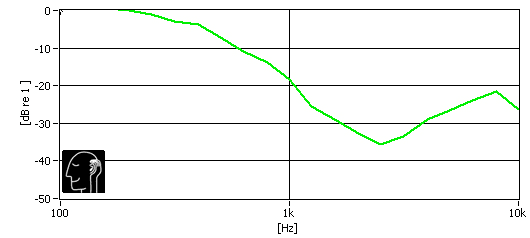
Total Harmonic Distortion
Total Harmonic Distortion (THD), sometimes just called distortion, is a measure of unwanted noise or clipped harmonics resulting from natural movement in the electro-mechanical construction of a speaker. If the speaker produces excessive unwanted noise—usually in the sub-bass and bass range—during operation, our THD test will catch it. The X11i performed alright here, but they do suffer from a small but audible element of distortion in the lowest sub-bass range. This is extremely hard to hear, however, and most listeners will never notice it.

Impulse Response
Our impulse response test is similar to our frequency response test, except that instead of measuring the relative decibel of each frequency, it measures how long those frequencies take to decay. The X11i performed well here, with no frequencies ringing longer than 15 ms. Any shorter than that length of time is imperceptible to humans, but longer-ringing notes can cause echoing or tinny sounds.
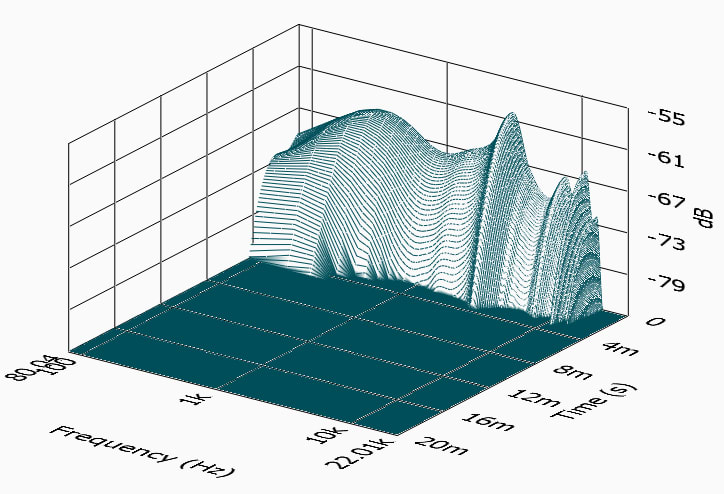
Meet the tester
Lee was Reviewed's point person for most television and home theater products from 2012 until early 2022. Lee received Level II certification in TV calibration from the Imaging Science Foundation in 2013. As Editor of the Home Theater vertical, Lee oversaw reviews of TVs, monitors, soundbars, and Bluetooth speakers. He also reviewed headphones, and has a background in music performance.
Checking our work.
Our team is here to help you buy the best stuff and love what you own. Our writers, editors, and experts obsess over the products we cover to make sure you're confident and satisfied. Have a different opinion about something we recommend? Email us and we'll compare notes.
Shoot us an email